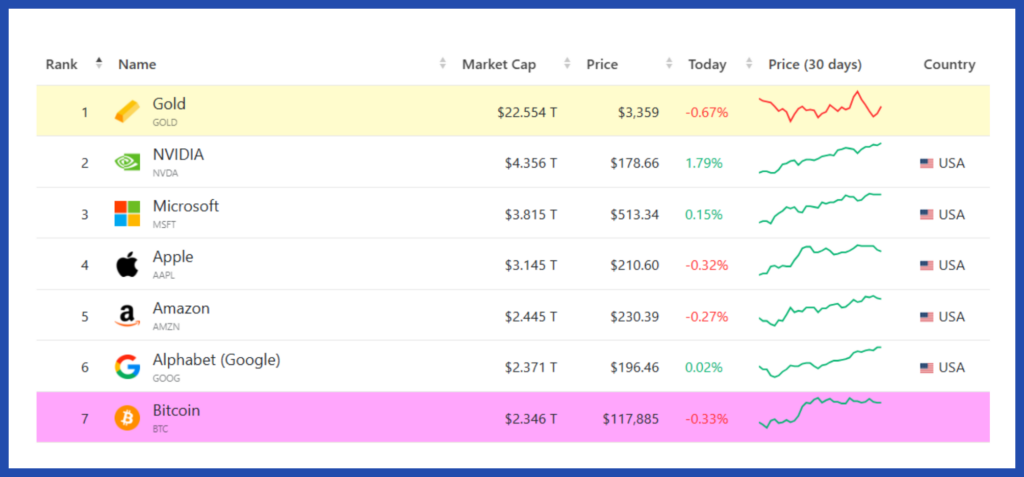In case you missed it, bitcoin (BTC) is now the seventh-largest asset in the world by market capitalization. Here’s what’s ahead of it.

The prices of Bitcoin (BTC), ethereum (ETH), XRP and other cryptocurrencies have been on a tear this year on the back of various factors, the most significant being the passing of the GENIUS Act in the U.S. This Act regulates U.S.-dollar stablecoins—cryptocurrencies pegged to the U.S. dollar, such as Tether (USDT) and USDC—and in doing that, takes a major step towards regulation of crypto in the world’s largest market, the U.S.
Let’s put crypto’s price rise into perspective. The table below compares the percentage gain of the top three cryptocurrencies with the U.S. stock market (S&P 500), the Canadian stock market (S&P/TSX Composite), and gold (GLD). (Use your fingers or mouse to scroll to the right.)
2025 has been great for crypto investors—but is the party over, or could BTC and other crypto prices continue to rise? According to Tom Lee, a renowned Wall Street analyst and bitcoin bull, BTC could rise to as much as $200,000 to $250,000 (all figures in U.S. dollars) by the end of 2025. His view is premised on continued low interest rates, further addition of bitcoin to corporate treasuries, and strong ETF inflows.
If previous crypto market cycles are anything to go by, Lee’s prediction of $200,000 may not be a pie in the sky. In previous crypto bull market cycles, the market topped out at the end of the year following the bitcoin halving event. “Halving” is a four-year cyclical event in which the number of coins mined per block decreases by 50%—meaning the rate at which new coins are added into circulation is cut in half.
The table below shows what percentage BTC has gained at each market-cycle peak compared to its previous market-cycle peak.
Based on this data, it could be reasonable to expect BTC to touch about $161,000 by the end of 2025. Here’s the simple back-of-the-envelope logic: BTC’s risk-return profile has moderated as its adoption has grown. Meaning, its highs and lows are not as pronounced as they were in previous cycles—although they’re still extreme compared to major stock indices.
So, let’s say BTC gains half of the percentage it gained in the previous cycle. Meaning, it gains 130% from its previous cycle top—not 260% as it did last time. That would take it to $161,000. Given that the previous cycle tops have been in November or December of the year following the halving, we could be looking at about $161,000 by the end of this year. Of course, forecasts or predictions like this could be way off the mark—take them with a grain of salt.
